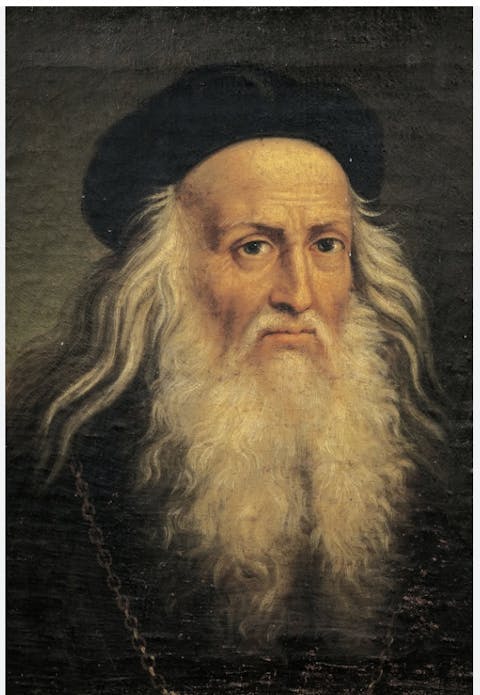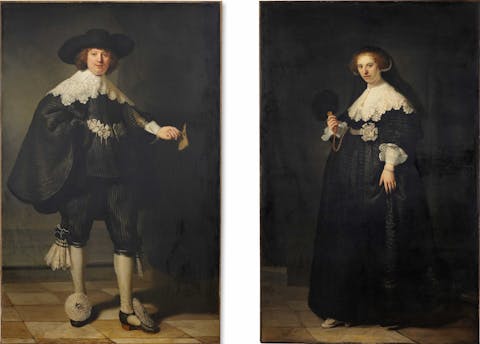Expert’s Guide: Old Masters
Written by Patrick Morgan
When it comes to classical art, the paintings created by the Old Masters are instantly recognizable both in style and subject matter. They typically depict a narrative that's oriented toward biblical scenes, portraiture, and/or historical events. Collecting Old Masters is more accessible than you might think…
Leonardo da Vinci, The Last Supper (Public Domain)
What is an Old Master?
The term refers to a fully trained artist who was a "Master" of the local artists' guild and who typically worked with a team of apprentice artists who were responsible for mixing paints, painting less significant portions of paintings, such as background or foreground elements while learning techniques from the most accomplished artist in the guild. Old Masters include artists from the Early Renaissance through the Romantic movement, a period spanning approximately 500 years from the 14th through the early 19th centuries. Some artists during this period excelled in several disciplines, the greatest of which were Michelangelo (1475-1564) and Leonardo da Vinci (1452-1519). Both were Italian "Polymaths", meaning they were active not only as painters but also as draughtsmen, engineers, scientists, theorists, sculptors, and architects.
Do you own Old Masters? Follow these easy steps to appraise your paintings.

Portrait of Leonardo da Vinci (Public Domain)
Leonardo da Vinci’s Mona Lisa & Albrecht Durer’s Adam and Eve
The famous Mona Lisa by Leonardo da Vinci as well as Albrecht Durer's Adam and Eve painting, were both commissioned by important members of the church and high society. Each piece was executed typically over the course of several months and sometimes years and was created with the help of numerous assistants working for the most accomplished artists.
Considering the best of the Old Master Painters, da Vinci, Albrecht Durer, and Caravaggio instantly come to mind. But there were thousands of other accomplished painters from Italy, France, Germany, Spain, and Holland who produced fine paintings during the same period, which can be had for a few hundred dollars or a few thousand euros if one has a good eye.

Leonardo da Vinci, Mona Lisa (Public Domain)

Albrecht Dürer, Adam and Eve, Engraving (Public Domain)
Top 3 Most Expensive Old Masters Ever Sold At Auction
1) Leonardo da Vinci’s “Salvator Mundi” (c. 1500), sold by Christie’s in 2016 for $450 million.

Leonardo da Vinci, Salvator Mundi (Public Domain)
2) Rembrandt van Rijn’s “Pendant Portraits of Maerten Soolmans and Oopjen Coppit” (1634), sold by Christie’s in 2016 through a private sale to the Louvre and Rijksmuseum for approximately 80 million dollars each.

Rembrandt van Rijn, Pendant Portraits of Maerten Soolmans and Oopjen Coppit (Public Domain)
3) Sandro Botticelli’s “Portrait of a Young Man Holding a Roundel” (1480), sold by Sotheby's in 2021 for $92 million.

Botticelli, Portrait of a Young Man Holding a Medallion (Public Domain)
How To Buy Old Masters for low prices?
While the most well-known Old Master paintings can bring millions, lesser known, but sometimes, nearly equally accomplished artists, who painted during the same time period, can be had for a few hundred or a few thousand dollars. If you visit Barnebys and search for “Old Masters”, you’ll find many impressive paintings from the 18th and early 19th century for sale for, what in today's money, can only be described as “peanuts”, considering each work took months and sometimes years to create, using several layering techniques from sketch, to color, to glaze, in order to achieve the desired results.
What To Look For When Buying an Old Master
When examining an Old Master period painting, one should always inspect the backside of the piece. Much like the evaluation process an expert goes through when examining an African mask, the back of the piece sometimes tells a bigger story than the front. When looking at an African mask, the back will show carving techniques specific to a certain period in time; the use of metal or stone tools, scuffs, breaks, surface color variations, and finally, the patina of use and handling over the year
The back of a five-hundred-year-old painting tells a similar story; what type of nails were used to fix the canvas, the color and specific material type, cotton or linen, old restorations, gallery inventory labels, auction lot numbers, notes attached by collectors indicating where and when the painting was displayed. All these elements can combine to tell a story of a piece of great age. Most experts also closely examine the paint with ultraviolet light to determine the extent of restoration work on the piece (most Old Masters have been repaired to some extent over the course of possibly five hundred years) as well as using X-ray technology to determine if the canvas has another image that has been painted over.
If an Old Master painting lacks the patina of age, is attached with modern nails, the frame is relatively new, or the backside appears exceptionally clean, chances are the painting is a reproduction…

The backside of an Old Master painting (Christie's)
How To Appraise Old Masters
Whether you're working with a reputable dealer or considering a purchase at auction, the team of experts at Value My Stuff is an excellent source of help. You simply send a few photos of the painting as well as add all the information you know, and within 24 or 48 hours, you get the appraisal certification. For appraisals of all kinds of collectibles, including Old Masters, press on this link.
Patrick Morgan is a general certified antique appraiser with over 25 years of experience, working with Caldwell and Associates, based in San Diego, CA, since 1998. Based in Paris since 2002, Patrick visits the auction rooms and combs the flea markets for treasures whenever he has some spare time, collecting anything from watches to weapons while continuing his primary focus on Tribal Arts.

